|
This is a ‘Summary’ of my research regarding the ‘internal’ (within the ‘Miyagi’ family) and ‘external’ (outside the ‘Miyagi’ family) transmission of Goju Ryu (which is NOT complete by any means) - but which provides a basic (historical) framework (post-1945) which is often obscured by the insular nature of the existing lineages. As someone of part Chinese descent, and whose family suffered at the hands of Japanese Nationalism during WWII in China – I do not in any way support or condone Japanese Nationalism or the racism and fascism that permeated Japanese culture between 1868-1945, etc. As a historian, however, I find it interesting to study and clarify how an aspect of exported Chinese martial culture developed in another country! Lineages, by their very nature, tend to only recognise their own transmission structures whilst inherently refusing to recognise a) the ‘existence’, and b) the ‘relevance’ of other (similar) lineages. This is because traditional martial art ‘lineages’ originating from within China, Okinawa and Japan – have either grown out of actual families (associated with specific ‘Clan’ surnames), or monastic, religious or spiritual associations and/or other special individuals, etc. This is a Confucian tradition that traces reliability and strength through its preserving structures - as those institutes that are replicated (continuously) from one generation to the next. Indeed, the present generation of teachers link the past (of the tradition) not only with the present – but also with those practitioners yet to materialise in the future! This is a grave duty and responsibility within the Confucian tradition that permeates many daily aspects of everyday culture through many Asian countries. Although ‘content’ and ‘interpretation’ can vary widely between teachers representing the same tradition – there is no reason why there should be a difference in ‘quality’ between ‘internal’ and ‘external’ transmissions as this designation is genealogical in nature and does not correspond in any way to ‘external’ (Yang) and ‘internal’ (Yin) mastery within the martial art being transmitted. A thumbnail transmission map of Fuzhou White Crane Fist, Higaonna Naha-Te and Goju Ryu Karate-Do may look something like the following – at least in blueprint: Xie Chongxiang [謝崇祥] (1852-1930) - Fuzhou White Crane Fist Master (this identity is disputed). Higaonna Kanryo [東恩納寛量] (1883-1915) - As a ‘foreigner’ from Okinawa (and being from ‘outside’ the ‘Xie’ family) he inherited an ‘external’ lineage of this White Crane Fist martial art during 1881. Higaonna Kanryo was in China between 1867-1881 (this dating is disputed). Miyagi ‘Internal’ Family Lineage (1915-1980) Miyagi Chojun [宮城長順] (1988-1953) - Miyagi Chojun inherited an ‘external’ (that is a lineage of Naha-Te ‘outside’ the Higaonna family) during 1915 – just prior to the death of Higaonna Kanryo. Between 1915-1953 – Miyagi Chojun invented and developed Goju Ryu Karate-Do. Miyagi Takashi [宮城敬] (1919-2008) - This is the eldest son of Miyagi Chojun who inherited the ‘internal’ (that is ‘inside’ the Miyagi family) lineage of Goju Ryu Karate-Do and started teaching during 1951 (in Tokyo). During 1955, on the 3rd Commemoration of the passing of Miyagi Chojun (October 8th) - Miyagi Takashi founded the ‘Transmitting Brilliance Training Hall’ (講明館 - Ko Mei Kan). He transmitted this ‘internal’ Miyagi lineage to his eldest son - Miyagi Toru [宮城徹] (b. 1947). In-turn, Miyagi Toru has already (formally) passed this ‘internal’ Miyagi family lineage to his second eldest son – Miyagi Manabu [宮城学] (b. 1980). Goju Ryu ‘External’ Transmissions (1935 Onwards) Japanese language sources state that at the age of 14-years old (in 1923) - a Japanese national (and former soldier) named Yamaguchi Minoru (b. 1909) – met a Capenter from Okinawa named ‘Marutani Takeo’ [丸谷武雄] who taught him ‘Karate’. In 1929, Yamaguchi Minoru founded the ‘Goju Ryu Karate-Do Kempo Dojo’ on the site occupied by the ‘Shinsengumi Garrison’. During the same year (1929), Yamaguchi Minoru entered the Ritsumeikan University (Kyoto) - to study law. Here, he founded the ‘Karate-Jitsu Study Group’ - with ‘Karate’ being written as ‘Tang Hand’ (唐手 - Tang Shou). The ideogram for ‘Jitsu’ (術) referring to a ‘war art’. In 1931, Yamaguchi Minoru invited Miyagi Chojun to Ritsumeikan University (Kyoto) - and began many years of receiving instruction. Between 1935-1936, Miyagi Chojun returned to Mainland Japan and transmitted his Goju Ryu Karate-Do system to a number of interested Japanese students living within Kyoto (and other places). Whilst teaching at Ritsumeikan University (Kyoto) - Miyagi Chojun continued to instruct ‘Yamaguchi Minoru’ {山口實実) to whom he would eventually grant the first name ‘Gogen’ [剛玄] (Strong Mystery) and transmit the ‘external’ lineage of Goju Ryu Karate-Do around 1937 – giving permission for ‘Yamaguchi Gogen’ to teach Goju Ryu Karate-Do throughout Mainland Japan! In 1950, Yamaguchi Gogen established the ‘All Japan Karate-Do Gojukai’ - with Miyagi Chojun agreeing to be honorary Chairman. During 1951, Miyagi Chojun awarded Yamaguchi Gogen a 10th Dan Black Belt grade – with the rank of ‘Hanshi’ (範士) - or ‘Master’. During 1952, Miyagi Chojun transmitted an ‘external’ lineage of Goju Ryu Karate-Do to Yagi Akitoku [八木明德] (1912-2003). It is said that Miyagi Chojun granted permission for Yagi Akitoku to open his own ‘Dojo’ to teach Goju Ryu Karate-Do – and that this is the only ‘external’ (or ‘outsider’) Dojo that Miyagi Chojun allowed to be founded during his lifetime. According to this history – a ‘belt’ and ‘training uniform’ was transmitted by Miyagi Chojun to Yagi Akitoku (which reads very similar to the ‘robe’ and ‘bowl’ being transmitted by Zen Masters to their disciples). During 1957, Yagi Akitoku founded the ‘Brilliant Warrior Training Hall’ (明布馆 - Mei Bu Kan) in Okinawa. (As an aside – it is interesting that the ‘Komeikan’ and the ‘Meibukan’ both make use of the Chinese ideogram ‘明’ [Chinese = Ming – Japanese = Mei) - which translates as ‘bright’, ‘clear’ and to ‘understand’, etc. This suggests that this Chinese ideogram possessed an important meaning and association to Miyagi Chojun. During 1955, a group of students who had trained with Miyagi Chojun during his lifetime, gathered together in Okinawa to ‘vote’ for a new representative of the ‘external’ (that is, ‘outside’ the Miyagi family) Goju Ryu Karate-Do tradition. This group chose ‘Miyazato Eiichi’ [宮里栄] (1922-1999). Through his student ‘Higaonna Morio’ [東恩納盛男] (b. 1938) - Goju Ryu Karate-Do spreads throughout the world! According to Chinese language historical records, Higaonna Morio was associated with ‘Miyagi Anichi’ [宮城安一] (1931-2009) who although possessing the same Clan surname of ‘Miyagi’ - was not directly related to Miyagi Chojun with whom he trained from 1948-1953 (exclusively so - between 1949-1951). It is said that both Miyagi Anichi and Yagi Akitoku were friends who were accepted together as disciples by Miyagi Chojun during 1948. Whilst being called ‘Miyagi’, however, Miyagi Anichi would have inherited an ‘external’ lineage of Goku Ryu Karate-Do – if indeed any such formal transmission took place. Conclusion Obviously, all the sons of Miyagi Chojun would have had an equal and consistent martial arts education, and all could clam an equal right to representing an ‘internal’ Goju Ryu Karate-Do lineage (with this right extending to the Miyagi male off-spring in the traditional model and their male and female off-spring in the modern system). Even within the traditional system this would be consider true – with the caveat that Miyagi Takashi (the eldest son) would possess the authority to decide important issues. Furthermore, the Miyagi family probably taught many people from outside their family – with some of these people possessing the right to claim an ‘external’ Goju Ryu Karate-Do lineage. By the time of the passing of Miyagi Chojun (in late 1953) at least two Goju Ryu Karate-Do lineages had been established: a) Miyagi Takashi (1951) - ‘Internal’ (Tokyo) b) Yagi Akitoku (1952) - ‘External’ (Okinawa) This being the case, an interesting question is why did a group of Miyagi Chojun students-disciples (who had trained with Miyagi Chojun during his lifetime), choose NOT to recognise the authority of Miyagi Takashi (his eldest son) and Yagi Akitoku – a very well-established ‘external’ disciple? By choosing ‘Miyazato Eiichi’ as a contemporary Goju Ryu Karate-Do ‘authority’ - a ‘new’ external martial lineage was generated – a lineage not created by Miyagi Chojun during his lifetime or the Miyagi family after his death. Having said all this, however, the intended ‘lineage’ of Goju Ryu Karate-Do may not be as straightforward as implied above, as it is well-known that Miyagi Chojun’s best ‘disciple’ was ‘Shinzato Jinan’ [新里仁安] (1900–1945) - who obviously was not from the ‘Miyagi’ family. As ‘Shinzato Jinan’ died during the final days of WWII – Miyagi Chojun had to make other plans with regards to preserving and transmitting Goju Ryu Karate-Do. Again, Chinese language historical sources state that it was Miyagi Chojun’s other (external) disciple ‘Seiko Kina‘ [嘉纳正兴] (1911-1994) - who was also permitted to teach students in his own right during Miyagi Chojun’s lifetime!
0 Comments
Miyagi Takashi [宮城敬] (1919-2008) – Miyagi Family Inheritor of Goju Ryu Karate-Do! (17.10.2022)10/18/2022 ‘I was born in Naha City during August 1919 (Taisho 10) and I am the eldest son of Miyagi Chojun (1888-1953) - the founder of Goju Ryu Karate-Do! My father taught me how to use my ‘hands’ (手 - Te) and ‘feet’ (足 - Ashi) during every moment of the day! He taught me where to ‘walk’ on the road, pavement or path – and where to place my awareness to stay safe! In a similar vein – he taught me how to hold an umbrella properly so that it looks innocuous but is really a ‘weapon’ that can be used in self-defence! For the Miyagi Family – Karate-Do was not only practiced in the ‘Dojo’ - but training of the mind and body continued throughout the entirety of our lives! My father – Miyagi Chojun – was a very popular person and knew many interesting and important people! He often told me about the famous people living in Okinawa - including military personnel and literary figures - who had come to live and work in Okinawa. Due to his wide range of associations, my father was well read, well-educated and took a general (and specific) interest in many different and varied subjects. As my father took me everywhere with him when I was young – I also met these people and often witnessed (and absorbed) the discussions as they unfolded! This is how my father ensured that I had a well-rounded education premised upon practical experience and intellectual stimulation! This is how I started the development of my mind and body and developed a sound foundation in the understanding of Karate-Do! I also understood exactly how my father thought about life and his general attitude toward Karate-Do! His personality clearly shone through during these interactions! As my father – Miyagi Chojun – believed that travelling expanded the mind, he advised me to travel to Kyoto and enrol for the Summer in a Martial Art College and study ‘Kendo’ (剣道). He respected Kendo and was very enthusiastic about me learning a different martial art! Indeed, through me experiencing Kendo training – I gained a far deeper understanding of Goju Ryu Karate-Do! My eyes were opened to a far broader view. I particularly benefitted from the Kendo technique of ‘Kakari Geiko’ (掛かり稽古). These are the techniques within Kendo which involve the development of a sound ‘defence’ - coupled with a penetrating and devastating ‘attack’. I used this experience (and knowledge) gained through my Kendo training in my later development of Goju Ryu Karate-Do! Shifu (師父) - we always referred to Miyagi Chojun by the respectful Chinese language term of ‘Master-Father’ - put a great emphasis upon ‘Preliminary Exercises’ (予備運動 - Yo Bi Un Do) that both ‘warm’ and ‘strengthen’ the bones, ligaments (joints), muscles and tendons! As these exercises are so demanding and arduous to perform and repeat – the ‘mind’ is fully developed as it is ‘calmed’ and ‘stilled’ over time! I took this crucial element of Goju Ryu Karate-Do training and developed it further so as to progress the Style. I developed what is referred to as ‘Hard-Soft Body Manipulation’ (剛柔体操 - Go Ju Tai Misao)! This is sometimes referred to as ‘Goju Body Mechanics’. This is a development within Goju Ryu Karate-Do that all of our students a) learn and b) perform – at the beginning of each public training session held in a Dojo. (The same situation applies to closed ‘private’ lessons where groups of students are training in a Dojo). Miyagi Chojun always followed the same training habits as his teacher Higaonna Kanryo (learned in China) - which involved the performing of the ‘Sanchin’ (Hourglass), ‘Shiko’ (Horse-Square) and ‘Nekoashi’ (Cat) Stances as ‘warm-up’ techniques. Miyagi Chojun was very strict when teaching these stances and would shout very loudly at the beginning of a training session to encourage the flow of energy and attentiveness of a student! The stance work teaches how to drop the bodyweight correctly, how to stand ‘still’ (rooted to the spot) and how to project the rebounding force forward and back correctly. Whilst practicing kata, Miyagi Chojun stated that each Kata possesses various (inherent) characteristics - such as how to stand, how to use the hands, how to use the legs and feet to kick correctly and how to move in any direction properly amongst many other important attributes. I was told to think carefully about what the concept of each individual Kata meant - and how each individual movement within each Kata should be accurately interpreted and performed. A defining aspect of Goju Ryu Karate-Do is that ‘distance’ is rapidly closed from ‘far’ to ‘near’ in a manner that exposes the opponent to danger whilst keeping the practitioner (traversing the ‘distance’) safely protect (through a superior technical positioning). This means that although there are variations and contradictions within the Kata movements of Goju Ryu Karate-Do – the emphasis is always upon ‘closing’ the distance and engaging the opponent with effective (and devastating) close-quarter-combat. The opponent is inundated and overcome with a variety of rapidly deliver and perfectly timed (powerful) martial interactions – involving the effective movement of the arms, legs and torso, etc. The movements, although ‘attacking’ - are delivered in such a manner that ensures the Goju Ryu Karate-Do practitioner is ‘safe’ whilst inhabiting the quiet ‘centre’ inherent within each set of movements. Quite often, words do not convey the totality of the defining principles of Goju Ryu Karate-Do – but words do serve an important supporting role in the teaching process. Obviously, individuals will understand what is said and taught to them according to their age, maturity and level of experience. This is why an effective teacher understands this and applies the teachings of Goju Ryu Karate-Do according to the level of awareness that a student brings with them into the Dojo. After-all, a good teacher is able to produce an equally good and effective student. When Master Miyagi Chojun passed away in 1953, I (Miyagi Takashi) was recognised throughout the Miyagi Clan in Okinawa as the true ‘Inheritor’ of the Goju Ryu Karate-Do ‘Lineage’. This is the ‘Family’ lineage which is separate and distinct from those other numerous ‘lineages’ transmitted ‘outside’ the family. The ‘Family’ transmission represents the ‘internal’ lineage – whilst all the other transmissions are representative of the ‘external’ lineage. This does not imply that one transmission is better or worse – but rather merely ‘different’. In the ‘Name Temple’ the pictures and the urns holding the cremated remains of the Miyagi Family are obvious for all to see (stretching back hundreds of years). I am part of this ‘Family’ transmission – whilst all those sharing in the ‘external’ transmissions have their own ‘family’ lineages that are separate and distinct (and all equally valid in their own right). Furthermore, it used to be that the ‘internal’ (Family) transmission was only taught (privately) within the family – whilst the ‘external’ lineages were public – but today, generally speaking, ALL ‘lineages’ are publicly taught to anyone who wants to learn. As for myself, I developed the ‘Komeikan’ (‘Transmitting Brilliance Training Hall’) during my time living in Tokyo to teach Goju Ryu Karate-Do (from 1951 onwards) to the general public as the only representative of the Miyagi Family. I have conveyed the teaching of my father – Miyagi Chojun – in a logical and correct manner, whilst also adding my own understanding. This is a process of evolution encouraged by both Higaonna Kanryo and Miyagi Chojun. Tradition is protected and conveyed through a process of continuous and relevant improvement.’ Japanese Source Article: 空手道剛柔流宗家として 剛柔流開祖宮城長順の長男として1919年(大正10年)8月那覇市に生まれた私は、幼少のころより師父の空手道人生と歩を一にしてきた。日常生活のなかで教えてくれた「手」の使い方、「足」の使い方、あるいは道を歩くときの注意、傘の持ち方等々、それら一つひとつが空手道における身体と精神の在り方の教訓であった。師父は人との交際も広く、沖縄在住の高名な方々や沖縄に来られた軍人や文人の方々について私によく語ってくれた。師父は、そうした広い交際をとおして、いわば教養人でもあった。私は常に師父の傍らに居ることで、その生活に溶け込んだ空手道精神と、その人生観、人格から多くを学ぶことができた。
私が京都の武道専門学校の夏期講習で剣道を修めたのも師父の奨めであった。この剣道修行は、私の空手道修行に新たな眼を開かせてくれ、掛かり稽古をはじめとした剣道の修練方法は、後の私の空手道指導法に大いに役立った。 師父の私への指導は、「予備運動」をまず徹底してやることだった。私はこの予備運動を「剛柔体操」と名づけ、 弟子たちの修練の最初に必ず行わせている。師父はまた、サンチン立ち、四股立ち、猫足立ち、前屈立ちなど立ち方をしっかり定義付け、非常にやかましく指導した。形の修練では、形の中にそれぞれ、立ち方、手の使い方、蹴り足の使い方、演武の方向などの様々な特徴があり、それらがどういう意味をもっているか、よくよく考えて修練するように言われた。 剛柔流空手道の形においては接近戦における妙技が至るところにある。これらはことばでもって十分に説明できるものではない。どう理解するかは修練者の武才というものもあるだろうが、やはり空手道の修練には良き師を得てはじめて真の空手道を会得するものであると思う。 私は師父宮城長順の死去により、空手道剛柔流宗家を受け継ぎ、空手道剛柔流宗家講明館を開設、講明館館長として東京において空手道の指導にあたってきた。私の指導法は、開祖宮城長順の指導法と指導精神を基礎に、戦後、私が考案した指導法の実際を取り入れて行っている。 Miyagi Takashi [宮城敬] (1919-2008): Establishing ‘Komeikan’ and Guiding Principles! (17.10.2022)10/17/2022 ‘It was around 1951, when I started teaching Goju Ryu Karate-Do in Tokyo (Mainland Japan). Immediately after WWII, there was a trend throughout Japan for Karate-Do to be firmly separated and divided into distinct ‘Styles’ - each with its own clear ‘lineage’ of teachers traceable all the way back into history - to a definite origination. National organisations were quickly formed, and this led to local branches throughout the entirety of Japan! An important element of this process involved the development and consolidation of Karate-Do training halls established throughout all Universities, Colleges and Schools, etc - forming a firm foundation of Karate-Do throughout Japanese culture. This was the start of modern Karate-Do seen not only throughout Japan – but also throughout the world! During this period, I received many requests to join various Karate-Do organisations, but I did not agree with much of the guiding principles or definitions that I was told. Instead, I independently formed the umbrella organisation of the Japan Goju Ryu Karate-Do Federation. This allowed a broad platform for a wide range of people to join and gather to train within Goju Ryu Karate-Do – but within this I also established the ‘Goju Ryu Family Head Brilliant Transmission Training Hall’ (剛柔流空手道宗家講明館 - Go Ju Ryu Kara Te Do So Ke Ko Mei Kan). The latter sub-group was designed to be very strict, narrow and highly disciplined with an exclusive membership. Together, this foundation served the basis through which I decided to teach Goju Ryu Karate-Do. During 1963 (Showa 38), I published two books which expressed this ‘external’ and ‘internal’ approach to my Goju Ryu teaching: a) ‘Karate-Do – How to Enjoy Practice’ (空手道の楽しみ方) - External b) ‘Orthodox Karate-Do – An Introduction’ (正統 空手道入門) - Internal This is how the Miyagi Family lineage of Goju Ryu Karate-Do was able to progress further and beyond its physical training centres! Individuals who lived a long distance from our training halls were able to pick-up these books and learn about our presence! This led to our group being contacted by NHK TV to enquire if I would participate in a filmed documentary entitled ‘Contemporary Record of Spiritual Revival’ (現代の記録・精神復興) - which was eventually broadcast TV on February 1st, 1964! In this documentary I was filmed practicing ‘Sanchin’ and ‘Seipai’ Katas! Around this time, the Nippon Budokan (日本武道館) was also established, whilst the issue of developing human resources was being addressed throughout a reconstructing Japanese society! The purpose of this programme with regard to Karate-Do was to explore the spiritual aspects of Japanese martial arts. Due to this influence, in 1966 (Showa 41), I set-up a Dojo in Kunitachi City, (Tokyo) and settled-down and started teaching Karate-Do in earnest. My teacher was my father – Miyagi Chojun. I was taught the ‘external’, ‘internal’ and ‘integrated’ path of Goju Ryu Karate-Do. This martial path has its roots within Higaonna Naha-Te – which was heavily influenced by Fujian White Crane Fist from China! All this was conveyed to me by my father and this education established the guiding principles through which I teach Goju Ryu Karate-Do. This is the ‘spirit’ of Karate-Do which must be maintained at all times through the replication (from one generation to the next) of the exact and correct physical Karate-Do techniques! Without this sound foundation the mind and body cannot be properly prepared so that effective offensive and defensive techniques can be correctly conveyed, learned and reproduced on the physical plane. The mind must be strengthened, expanded and freed from the dominance of the body – but this can only be achieved by disciplining the body so that the mind can be freed. When the body is properly positioned and perceived – the mind and body enter a new dimension of existence. Although Karate-Do has spread all over the world – I do not agree with sport Karate – which is a deviation away from the true ‘spirit’ of Karate-Do. It sets the wrong example and strengthens the very ego proper Karate-Do is designed to overcome! We must preserve the ‘spirit’ which manifests through the correctly performed physical techniques of Karate-Do! There should be NO fabricated ‘competition’ between individuals as this is the cultivation of pointless aggression! The only competition is between our conditioned minds and bodies – with our training colleagues conspiring to help us on our journey (and we on theirs)! The worst example of this development is ‘Kata’ competitions – where all the traditional purpose and value of a Kata is removed and replaced simply to ‘entertain’ an audience to win a pointless medal! To gain these awards – we lose the ‘spirit’ of genuine Karate-Do. The true purpose of Kata is being abandoned as each generation loses vital elements of the Kata passed on from China to Okinawa! Karate-Do begins and end with Kata and I would ask all the modern Karate-Do practitioners, Referees and other professionals to ‘think’ about this situation and perhaps assist one another in preserving the genuine spirit of Karate-Do! Please do not demean your sacred martial art – as untold numbers of people have suffered in the past to learn, preserve and pass on genuine Japanese martial arts!’ Japanese Language Source: 講明館の設立と指導理念 私が東京で空手道を指導し始めたのは昭和26年ごろである。戦後いち早く、わが国の空手道界では、各流派などによる団体結成の動きが見られ、また大学の空手部を中心とした連盟が結成されるなど、今日見られるように全国的な発展へつながっていったわけである。その間、私のもとに団体設立のために参加を求める声が何度もあった。しかし、私はどうもその在り方に同調できないでいた。私は独自に日本空手道剛柔流連盟を結成、剛柔流空手道宗家講明館を設立し、そこを本拠に指導に当たることにしたのである。
1963年(昭和38年)に空手道の初心者向けに『空手道の楽しみ方』や『正統 空手道入門』を出版、正しい空手道の学び方を世に問うた。また、NHKから請われ1964年2月1日放映の教育テレビ番組「現代の記録・精神復興」に出演し、サンチンの指導と形セーパイを演武した。このころ日本武道館の建設に着手され、「人づくり」の問題が高まっていた。日本武道の精神的なものを模索しようとしたのがこの番組の目的であった。その後、私は1966年(昭和41年)に東京・国立市に道場を構え空手道の指導に本格的にあたった。 私の指導理念は、師父宮城長順の指導法と空手道精神を基礎に、空手道本来の伝統性を維持しつつ、同時に教育的・体育的観点から身体のもつ攻防の技を自在に体得できるようにすることである。 空手道が全国的に普及したとはいえ、昨今、空手道の真の伝統性が失われ、いわゆる「競技空手」に終始した指導が見受けられるのは誠に残念である。最近は「形試合」も行われるようになったが、形の意味がわからずに演じられていたりして、形の乱れが目に付くものもある。したがって試合の審判方法と各流派の形についての研究をもっと真剣に行うべきだと思う。「形に始まり形に終わる」という空手道修行の警句を忘れてはならない。 Miyagi Takashi [宮城敬] (1919-2008) - Great Sacrifices During the Battle of Okinawa! (15.10.2022)10/16/2022 Translator's Note: This short historical text can be found in its original Japanese language form on the 'Komeikan' website linked both above and below. This is the website of the Miyagi Family Goju Ryu Karate-Do association based in Okinawa. This translation is a 'quote' from a publicly viewable section of this website that would overwise be limited to the vagaries of universal translators - and all the contextual 'errors' such devices entail. If you find this content interesting - please contact the 'Komeikan' association directly on info@goju-karatedo.com. ACW (15.10.2022) ‘A few years before I went to war – I received direct instructions from Miyagi Chojun (my father). This was in the form of a set of clear and concise directives. He said “Remember everything I have taught you regarding the development of the mind and body. Do not forget any part of it.” I took this as a formal “transmission” during a very difficult time. Due to the war – death was on the minds of everyone – such was the destruction. Through these words I was entrusted with the future of Goju Ryu Karate-Do. Amongst my father’s best students was ‘Jinan Shinzato’ (新里仁安). My father – who was considered a ‘Great Master’ in his own right – thought very highly of Jinan Shinzato and had him sent to Tokyo to teach martial arts in his name at the Dai Nippon Butokukai. When my turn came to go to the Front, my father advised me that if anything happened to him – I was to consult with Jinan Shinzato (I referred to him as ‘Uncle Jinan’). Jinan Shinzato, however, was killed during the war in its final year (1945)! Miyagi Chojun was greatly upset and disappointed by the death of one of his best Goju Ryu Karate-Do students! Even after the war, Miyagi Chojun continued to teach at the Okinawa Prefectural Police Academy and to profoundly mentor his disciples. Considering the great losses inflicted upon us during the Battle of Okinawa - I know that in private Miyagi Chojun suffered a considerable psychological and emotional trauma! The sheer destruction involved in the war had eradicated decades of great and sustained effort in developing and transmitting Goju Ryu Karate-Do! We had to re-build out of the bitter ashes of defeat... When the war ended, I was demobilised from the Imperial Japanese Army and lived in Tokyo. I kept in regular contact with my father (Miyagi Chojun) through writing many letters and postcards. My father (Miyagi Chojun) always propagated an attitude of positively looking toward the future and in creating continuously improved conditions for the development of Goju Ryu Karate-Do! He expressed an intention to travel to Tokyo and visit me – but during the following year a tragedy occurred. Miyagi Chojun died of a heart-attack on October 8th, 1953 (Showa 28). He was 65 years old. His passing was truly a great loss to the Okinawan Karate-Do world!’ Original Japanese Language Source: 沖縄戦での大きな犠牲 私は出征する数年前、師父長順から言い渡されたことがある。サンセールーの形の指導を受けたときである。「これまで教えたことはおまえの体のなかにしっかり覚えておくように」と。戦争の不安がよぎったのだろう。そのときの師父のことばが剛柔流空手道を私に託した遺言のように思えるのである。師父の弟子のなかでも新里仁安は師父の信望も厚く、大日本武徳会へ演武者として派遣するなど実力があった。私の出征時に、師父は「もし自分に万が一何かあった場合、仁安(私はジルウおじさんと呼んでいた)に相談するように」と言ったことばが思い出される。しかし、その仁安は終戦の年に戦死し、師父の落胆の大きかったことが推察される。 師父は戦後も沖縄県警察学校で教えながら、門弟の指導にあたった。しかし、沖縄戦での大きな犠牲と損失を考えると、師父は精神面でも大変だったと思う。戦後復員して東京に居た私と師父との交流は、何回となく手紙やはがきのやり取りになった。空手道に一生を捧げてきた師父は、「空手道の将来」が絶えず念頭にあったのだと思う。私宛てに書をしたため上京する意思を示したが、その翌年、1953年(昭和28年)10月8日に心筋梗塞で急逝した。満65歳であった。空手道界において誠に大きな損失であった。
Dear Tony I translated this interesting text: 'Komeikan was founded in 1955 by the eldest son of Miyagi Chojun (1888-1953) - the founder of Goju Ryu Karate-Do. The eldest son - Miyagi Takashi (1919-2008) was the 2nd Head of Goju Ryu (afer his father) - and founded this organisation on the 2nd anniversary of the passing of Miyagi Chojun in 1953 (Showa 30). The organisation was called '講明' (Ko Mei) or 'Transmit Brilliance' - technically the full name being 'Transmit Brilliance Training Hall' (講明館 - Ko Mei Kan). The purpose of this organisation is to penetrate and clarify the origin and meaning of the 'essence' of the Goju Ryu Karate-Do Style! 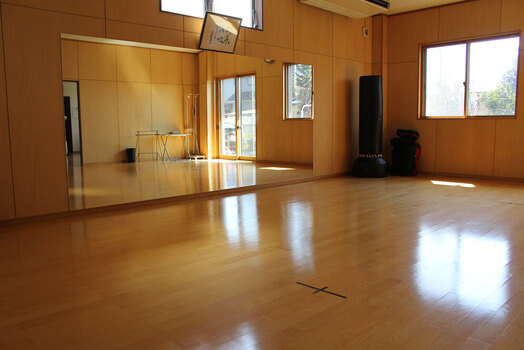 The 'Pristine' Komeikan' Dojo! The 'Pristine' Komeikan' Dojo! This knowledge is used to enhance 'how' and 'why' Goju Ryu Karate-Do is practiced within the modern world! As this is the only genuine lineage - Miyagi Takashi carried on his father's legacy until he passed away at the age of 89! He practiced Goju Ryu Karate-Do to maintain his own health, demonstrating its benefits as a mental and physical discipline. As for myself, I am the 3rd Head of Goju Ryu Karate-Do - the grandson of Miyagi Chojun - and my name is Miyagi Toru. It is my duty to carry on the genuine Goju Ryu Karate-Do lineage! Miyagi Chojun taught the 'Hard', 'Soft' and 'Integrated' Way which he learned from Higaonna Kanryo (1853-1915). What was passed-on from the origins in China is the need for 'logic' and 'reason'. Every purpose must be clearly understood, fully comprehended and correctly practiced. At the 'Komeikan' we work hard to combine 'tradition' with 'modernity' so that there is no contradiction between the past, the present and the future! We use body conditioning, basic technique, Kata and Kumite! Komeikan Director: Miyagi Toru - EMAIL: info@goju-karatedo.com 講明館館長から
講明館は、空手道剛柔流の開祖宮城長順(1888-1953年)の長男で宗家2代目の宮城敬(1919-2008年)が1955年(昭和30年)の開祖三回忌を機に命名、設立されました。「講明」とは意義を説き明かすこと、事理を講究し明らめることという意味です。 師父亡き後、敬は空手の道を講究しその真理を明らかにせんと研鑽を重ね、開祖の指導理念の基に正統剛柔流の普及に一生を捧げました。89歳で逝去するまで自身の健康維持に空手道を実践、精神的・肉体的鍛錬法として、その利点を明らかにしてきました。 私の祖父である開祖長順は沖縄の伝統「手」を近代空手道として確立しようと、それまで秘密裏に一部の人に口伝とされてきた技のすべてを、「理」にかなった身体動作として厳密に定義づけ、「剛柔」の哲理で攻防自在の「手の道」を説きました。 空手道修練で私がいつも心がけていることが、この「理にかなっている」ということです。宗家剛柔流講明館では、予備運動(剛柔体操)から形の演武、そして組手までのあらゆる稽古を通し、「伝統と創造」をテーマに稽古に励んでおります。 講明館館長 宮城 徹 |
AuthorShifu Adrian Chan-Wyles (b. 1967) - Lineage (Generational) Inheritor of the Ch'an Dao Hakka Gongfu System. |
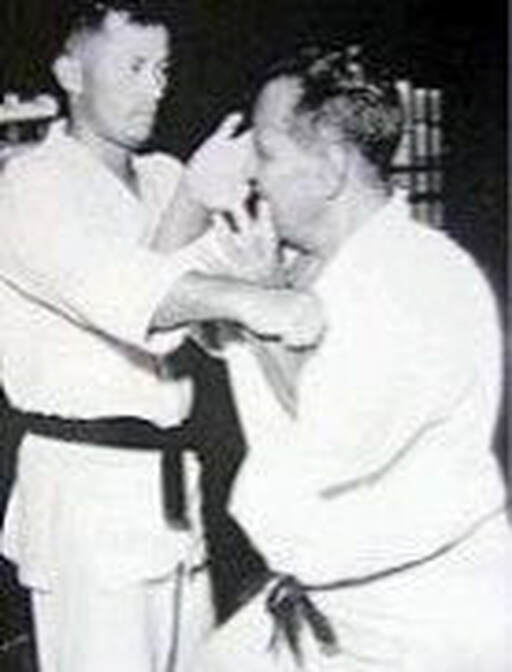
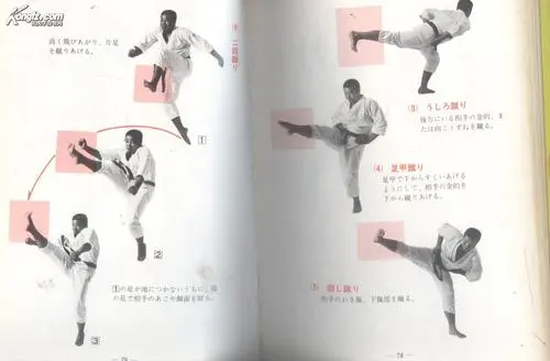
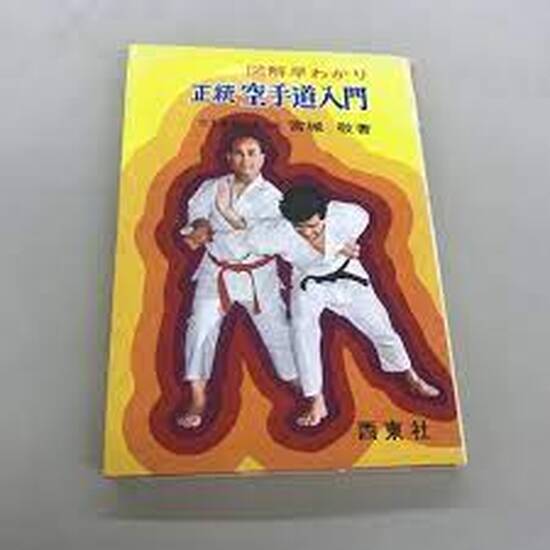
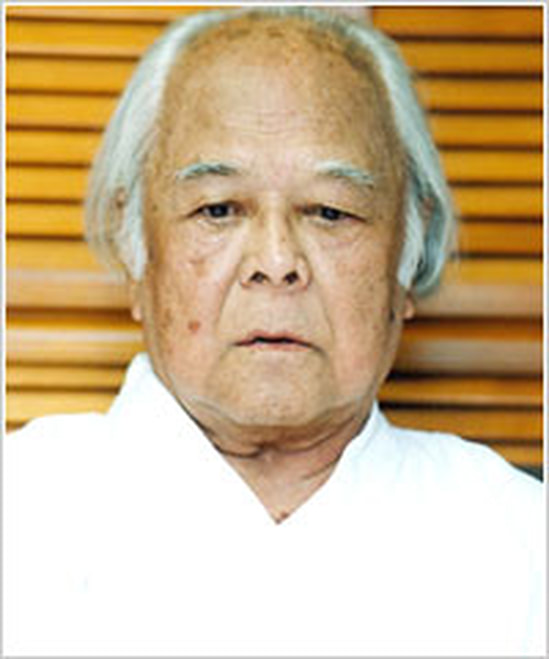
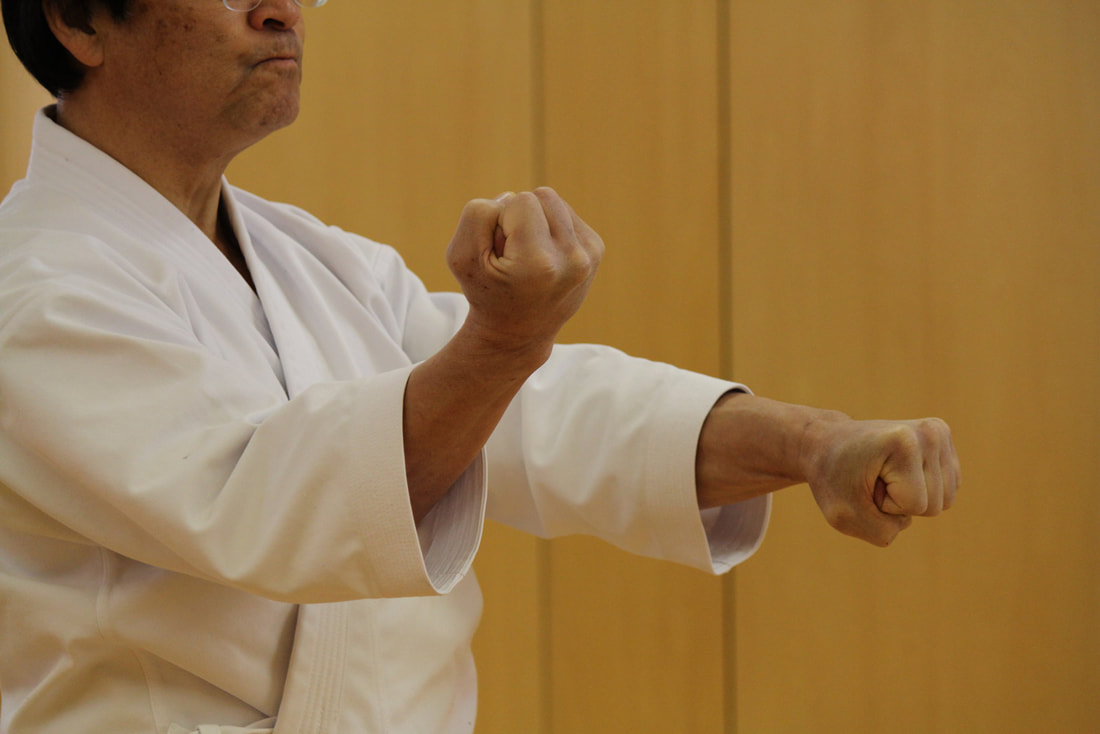
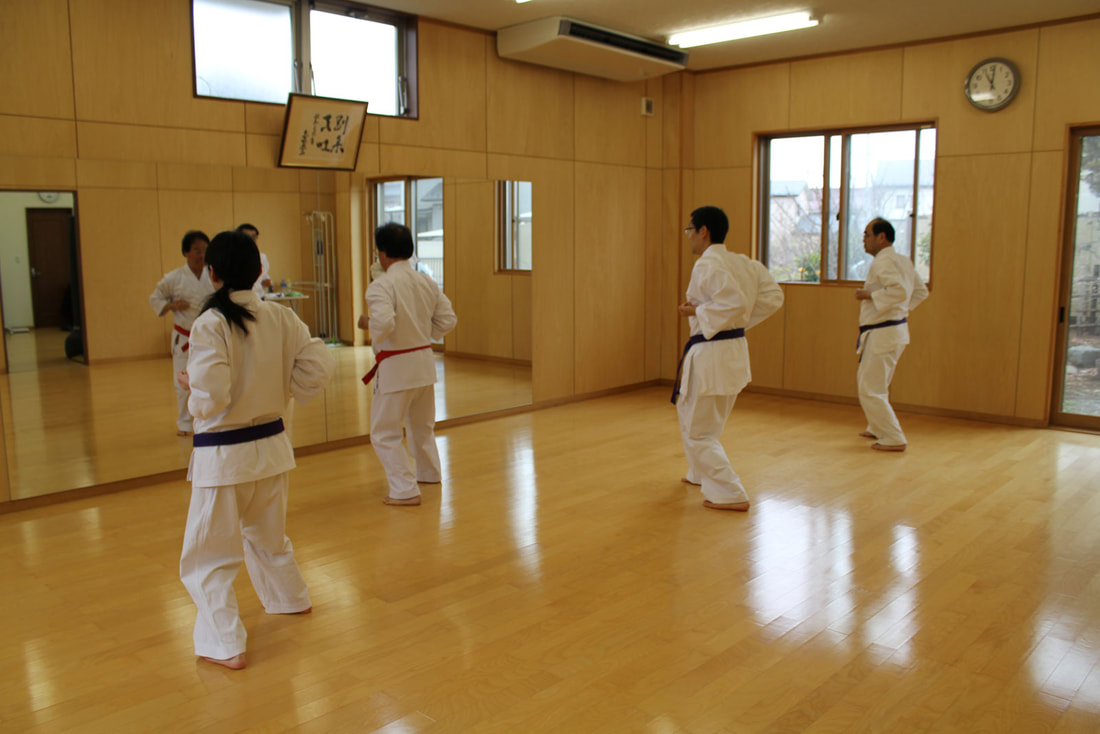
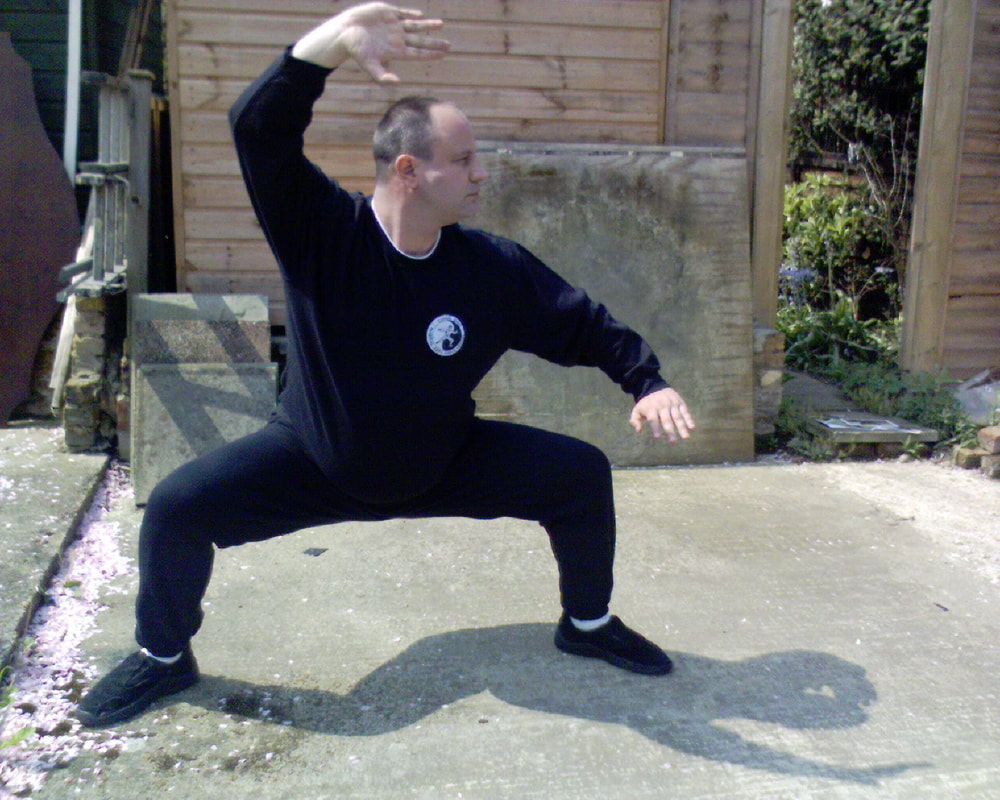
 RSS Feed
RSS Feed